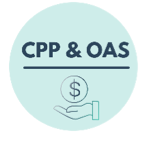A Personal Journey on how Today’s Choices can spoil your Retirement (or Early Retirement) Dreams
By Maureen Thorne, Small Business Owner/Guest Author
As my husband and I approached our late 40s/early 50s, we decided it was time to solidify our previous hastily sketched plans for early retirement. We had worked hard for many years and skimped in places (never purchased a brand-new car) and were confident that we had done everything right to retire early and live our best early retirement lives.
However …
When we sat down with the numbers, we realized our dreams of an early retirement with travel and adventure were farther from reach than we thought. We both had well-paying careers and didn’t feel that we had splurged so much that we should be this far behind.
What happened?
And, more importantly …
How do we get back on track?
We read a great article from Lowrie Financial, Retirement Planning for Gen Xers: Build Wealth and Retire Happy, which gave us some great insights and seemed to speak directly to our financial situation. Another topic area that Lowrie Financial introduced us to was behavioural finance / holistic financial planning for savings. We felt these were areas we should explore more to help us achieve our long-term financial goals.
Once panic-mode subsided, we sat down with some spreadsheets to see what had gone awry and figure out how (and if?) we could still retire early and be able to comfortably afford the things we wanted from retirement.
Here’s what we did to right the (sinking?) ship:
Real Talk from an Independent Financial Advisor
We booked a meeting with an independent financial advisor who had lots of questions for us about what we wanted to achieve. We explored behavioural finance which allowed us to really look at the impact on our spending habits and investing history. One of the most helpful tough-love comments from him:
“You make a lot of money. Where is it all going?”
Good question.
This led us to one of the steps we took to financially recover our early retirement plans: Family Spending Forensics.
We also realized we had missed opportunities to pack away excess cash in the past. Every time we stopped shelling out for something, we simply cheered and lived it up to that higher level of cash flow. We finished paying our mortgage, so we took the entire family to Europe. We stopped paying into our kids’ RESP, so we re-renovated the house. This identified another area that was a stumbling block for us to achieve that long-dreamed-of early retirement: Retain (and Make the Most of) “Found Money.”
Our financial advisor also pointed out something we begrudgingly already knew. We had really hurt ourselves with DIY investing. Although there were times we won big, there were many times we lost, both small and big. Although, it was fun for us to see how well we could do on our own and we reveled in keeping up with the financial and investing insights online to help guide us, always seemed to be behind the eight ball and not getting ahead like we should have been. We were driven by emotions. In hindsight, our DIY investment strategy seemed to be: 1 step forward, 2 steps back. There were so many things we didn’t focus on: tax ramifications, behavioural investing, opportunity costs, chasing returns, FOMO (Fear of Missing Out) investing … We knew we needed to: Stop Emotion-Driven DIY Investing.
How we got back on track for our Early Retirement Financial Goals
1. Family Spending Forensics
“You make a lot of money. Where is it all going?”
Our independent financial advisor’s words kept ringing in our heads. So, as advised, we tracked our spending and instituted a realistic budget.
There were areas that immediately jumped out as places we could restrain our big over-spending: clothing, dining out, vacationing, etc. That didn’t mean that we stayed at home wearing rags and eating Kraft Dinner. It simply translated to setting aside a reasonable budget for the year or month for that particular spending category and sticking to it. We still vacationed, we still shopped, we still ate out – but all with the budget in mind.
We also found that we could pull back in multiple smaller areas – putting a budget figure in place helped us shave small amounts in many areas, and it added up.
It’s also important to note that our “scrimping” went virtually unnoticed in our every day lives. We didn’t feel deprived at all.
A great article we discovered, Spending Decisions That End Up Costing a Million Dollars by Andrew Hallam, talks about an often overlooked impact of spending decisions: opportunity costs.
“Those massages also cost far more money than initially meets the eye. ‘Opportunity cost’ is the difference in cost between making one decision over another. An opportunity cost isn’t always financial. But in my case, those massages might have cost us more than $770,000.
Confused? Check this out:
We spent about $150 a week on massages during an 11-year period (2003–2014).
That’s $85,800 over 11 years.
Over that time, our investment portfolio averaged 8.34% per year.
If we had invested the money we spent on massages, we would have had an extra $143,239 in our investment account by 2014.
That’s a lot of money. But I’m not done yet. We left Singapore in 2014 (when I was 44). Assume we let that $143,239 grow in a portfolio that continued to average 8.34% per year. Without adding another penny to it, that money would grow to $770,241 by the time I am 65 years old.
That’s the long-term opportunity cost of spending $150 a week on massages for just 11 years.”
We realized very quickly how much a little restraint in our spending habits impacted our bottom line. Within just 1 year, we could see the light back to our early-retirement goal. Just 2 years later and we are well ahead of plan.
2. Retain (and Make the Most of) “Found Money”
“Found Money” – sounds great! So, what is it. In my mind, it is excess cash flow that was not expected or presents a sudden or continuous influx of cash to the household. This can be: Continue Reading…
 1.) Expecting the government to look after you
1.) Expecting the government to look after you 2.) Applying for government benefits too early
2.) Applying for government benefits too early 3.) Spending Too Much Money Too Soon
3.) Spending Too Much Money Too Soon





